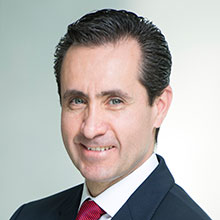As Latin America and the Caribbean begins to emerge from six years of economic slowdown, including two of recession, it is essential to find ways to nurture and strengthen this budding recovery. Economic growth was the central factor behind the region's striking social and economic achievements of the last decade, when Latin America cut extreme poverty by half, significantly reduced inequality, and greatly expanded the middle class. But we no longer enjoy the conditions that enabled all this. The drop in the prices of commodities and the slowdown in key economies, such as China, hit the region hard.
In today's very different scenario, it is crucial to rebuild the foundations for economic recovery. Infrastructure stands out as one of the main enablers to enhance productivity and sustainably boost our domestic growth engines.
It is clear that Latin America and the Caribbean does not have the infrastructure it needs or deserves, and the accomplishments of the past decade make this contrast even starker. Low-quality roads keep people from jobs and public services and increase the costs of small farms and exporters alike, making them less able to compete. Over 100 million people, almost a fifth of the population, do not have access to improved sanitation, and two-thirds of sewage goes untreated, spreading disease and degrading our rivers. In 2012 alone, this caused Latin Americans to lose a combined 900,000 years of life because of disability, ill health or death.
At the same time, much of our current infrastructure is not prepared for trends such as rapid urbanisation, or to face the extreme weather events associated with climate change, that result in tragic loss of life and massive rebuilding costs. The recent floods in Peru and Colombia caused over 300 deaths, and swept away more than 3,000 km of roads and almost 300 bridges in Peru alone, isolating scores of villages. The poor and vulnerable bear the brunt of these impacts. They are also the first to suffer when infrastructure is simply not present, having no option but to resort to costly alternatives such as water trucks and electrical generators.
Traditionally, the region has tried to solve this by looking for more resources. There has long been talk about the investment gap in infrastructure — the difference between what we have and what is needed — with estimates around US$180 billion per year. However, this hides a very complex and varied reality across the region. While the region, as a whole, invests less than three per cent of GDP in infrastructure, compared to East Asia's over seven per cent, some countries invest more than four per cent. In addition, significant increases in public investment are not realistic in today's tight fiscal context.
Two recent World Bank reports reveal that, rather than necessarily spending more, a lot can be done by spending better and by ensuring that the full potential of the private sector is tapped. The debate must shift from how much finance the region needs, and how to raise it, to what actually needs to be done, and finding the most efficient ways of achieving it.
Addressing the inefficiencies will require interventions at the sectoral level as well as more systemic ones, including tackling lack of institutional capacity for planning, regulatory uncertainty, as well as budgeting and implementation issues.

